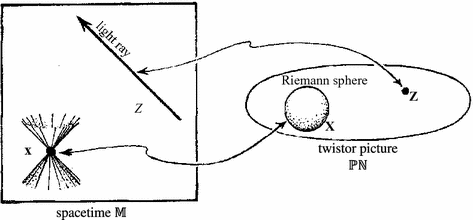On Thursday on Capitol Hill, the House Subcommittee on Energy and Environment of the Committee on Science and Technology will hold a hearing with the title Investigating the Nature of Matter, Energy, Space and Time. Witnesses will be Hugh Montgomery of the Jefferson Lab, Lisa Randall of Harvard, Pier Oddone of Fermilab and Dennis Kovar from DOE. A webcast of the hearing should be available.
To brief the subcommittee, someone put together the hearing charter available here. It does a reasonably good job of explaining at a popular level what particle and nuclear physicists are working on and what problems they are trying to solve. Unfortunately the part of the document on particle physics is marred by some stale string theory hype, with the subcommittee told that:
Unification was Einstein’s great, unrealized dream, and recent advances in a branch of physics known as string theory give hope of achieving it. Most versions of string theory require at least seven extra dimensions of space beyond the three we are used to. The most advanced particle accelerators may find evidence for extra dimensions, requiring a completely new model for thinking about the structure of space and time…
Understanding the very early formation of the universe will require a breakthrough in physics, which string theory may provide.
Selling the US investment in machines like the Tevatron and the LHC as being about extra dimensions seems to me to be a mistake. Very few physicists believe it likely that this is what the LHC is going to find, and the failure to find promised extra dimensions at the LHC will not be helpful in a few years when the US particle physics community is trying to convince Congress to fund a next-generation accelerator.
The charter doesn’t explain what the LHC is really good for and why physicists are so excited about it: finally the energy-scale of electroweak symmetry breaking is being reached, with the promise of finding out what sort of physics is behind this phenomenon and responsible for mass. There’s no need for string theory hype to justify the interest and importance of this sort of very fundamental research, bringing in failed highly speculative ideas is likely to actually be counter-productive. The case for the current and planned US particle physics program is a very strong one, I hope the witnesses are able to make it clearly and forcefully to the subcommittee.
Update: The hearing is going on now, with a break for a vote. The webcast is here. The first question from Representative Vern Ehlers, a physicist, was for Lisa Randall, and he asked if there is any experimental proof or corroboration of string theory. Instead of answering the question with a straightforward “No”, and explaining that string theory makes no predictions, Randall did what she could to obfuscate the issue. She answered by going on about how, while string theory was speculative, it has led to ideas testable at accessible energies: supersymmetry and large extra dimensions. I suspect her answer left Ehlers and others still confused about the issue he was asking about. Avoiding public acknowledgment of the failure of string theory unification seems to extend even to Congressional testimony….
Update: There’s a press release here.
Update: The video webcast of the hearing is now available from the hearing web-page.


